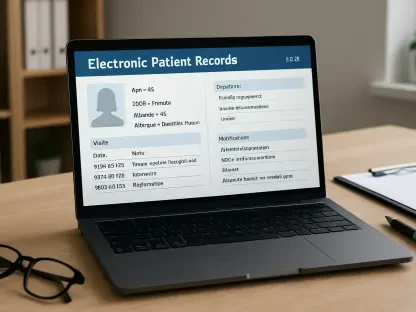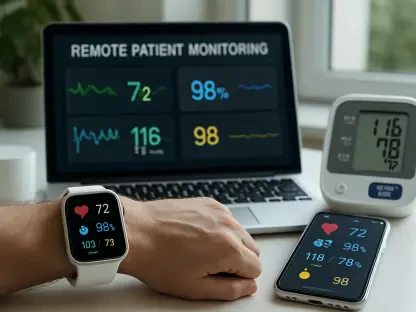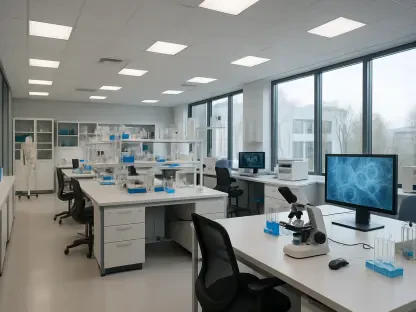In an era where digital solutions are transforming every aspect of daily life, the integration of telehealth services into educational environments has emerged as a critical step toward ensuring student well-being. Frederick County Public Schools (FCPS) in Maryland is at the forefront of this shift, responding to a state mandate that requires school districts to establish policies for telehealth appointments during school hours. This initiative, driven by recent legislation, aims to provide students with access to essential medical and mental health services without compromising their education. As the district updates its health and wellness policies to comply with state law, the focus remains on balancing accessibility with minimal disruption. This development reflects a broader trend of leveraging technology to address health needs in innovative ways, raising important questions about implementation, equity, and the intersection of education and emotional support within a structured school setting.
Navigating State Mandates and Policy Updates
The push for telehealth access in schools stems from a Maryland state law signed last year, mandating that districts develop policies to facilitate virtual health appointments during school hours. For FCPS, this involves revising Policy 409, originally focused on student health and wellness, to include specific provisions for telehealth. The updated policy, now proposed to be retitled “Student Health and Wellness,” aligns with related staff guidelines and incorporates additional health requirements like immunizations and physical exams from a previously decommissioned policy. Under the guidance of Superintendent Cheryl Dyson, a corresponding regulation is being crafted to outline the practical steps for implementation. This regulation will empower school principals to designate spaces for telehealth sessions, ensuring that these appointments are conducted with parental involvement, either in person or virtually, while maintaining a clear boundary that the district does not provide direct medical care but only logistical support.
Beyond the policy framework, the timeline for adoption reveals a slight delay in meeting the state’s deadline for the current school year’s start. Despite this, district officials, including Chief Legal Counsel Steven Blivess, remain confident that the minor lag will not hinder progress. The proposed updates have already advanced unanimously through an initial board reading, with a second reading scheduled shortly after the school year begins. This demonstrates a unified commitment to compliance while addressing local needs. Importantly, the policy avoids supporting ongoing, frequent therapy sessions during school hours to prevent educational disruptions and ensure fair access to limited time slots for all students. This careful delineation underscores the district’s intent to integrate telehealth as a supplementary resource rather than a primary mode of care, highlighting the complexities of adapting state mandates to the realities of a busy school environment.
Balancing Educational Priorities with Health Access
One of the central challenges in implementing telehealth within schools lies in maintaining a balance between health access and academic priorities. FCPS officials have emphasized that while telehealth appointments are crucial for addressing mental health and medical needs, they must not interfere with a student’s learning experience. To this end, the policy stipulates that parents or guardians must arrange and be present for these sessions, even though state law permits students aged 13 and older to seek mental health services independently. This requirement, as noted by Dana Falls, Director of Student Services, ensures accountability and support during school hours. Additionally, considerations around a student’s emotional readiness to return to class after a session are being factored into the planning, recognizing that virtual consultations, particularly for mental health, can have varying impacts on a student’s state of mind and ability to refocus on studies.
Logistically, the framework for these appointments presents its own set of hurdles. Healthcare providers are responsible for supplying the virtual platforms, as FCPS does not maintain its own system for such services. While school devices may be provided if necessary, there is a preference for students to use personal devices to reduce strain on district resources. The overarching principle of equitable access, as mandated by state law, guides these efforts, ensuring that no student is left behind due to technological or scheduling barriers. However, the policy also seeks to prevent overuse of telehealth slots that could limit availability for others or detract from instructional time. This cautious approach reflects a broader recognition of telehealth as a vital tool that must be carefully integrated into the school day, with clear boundaries to protect both educational outcomes and fairness in access to these emerging health services.
Reflecting on a Path Forward for Student Well-Being
Looking back, the journey to integrate telehealth into Frederick County Public Schools showcased a deliberate and collaborative effort to meet state requirements while prioritizing student welfare. The unanimous board support for policy updates and the meticulous crafting of regulations signaled a shared dedication to adapting to modern health solutions. As the district navigated slight delays and logistical nuances, the focus remained steadfast on ensuring that telehealth served as a supportive, not disruptive, resource. Moving forward, the emphasis should shift to monitoring the emotional and academic impacts of these virtual appointments, refining scheduling practices to maximize equity, and fostering ongoing dialogue with parents and providers. By building on this foundation, FCPS can continue to champion a model where technology and education intersect to nurture comprehensive well-being, setting a precedent for other districts to follow in harmonizing health access with learning environments.









